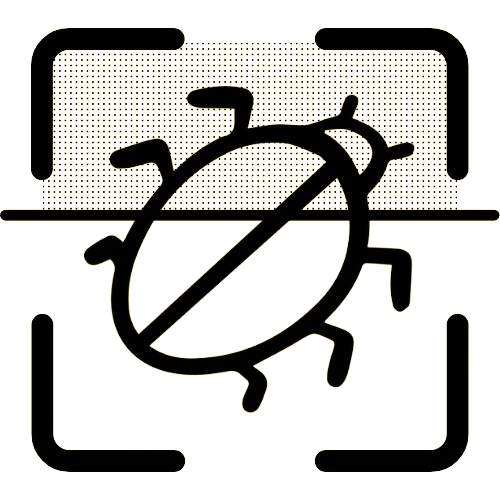The Ultimate Guide to Bed Bug Inspection: How to Check for Bed Bugs Effectively
May 17, 2025
Understanding how to check for bed bugs is an essential skill for anyone concerned about maintaining a pest-free home. Bed bugs are notorious for their resilience and ability to remain undetected in our living spaces until an infestation becomes severe. This comprehensive guide will equip you with the knowledge needed for effective bed bug detection using both traditional methods and advanced technology, including our state-of-the-art Bed Bug Scanner. By being proactive in identifying the signs of bed bugs early, you can prevent costly infestations.
The Importance of Knowing How to Check for Bed Bugs
Understanding Bed Bug Behaviors and Habitats
Bed bugs are small, elusive creatures that tend to hide in cracks and crevices close to human environments, particularly where we sleep or sit for extended periods. Knowing how bed bugs behave and where they tend to congregate is crucial for effective inspection. Bed bugs are most active at night and are attracted by the carbon dioxide we exhale and the warmth of our bodies. They typically hide in mattresses, box springs, bed frames, and other bedroom furniture, making these key areas for inspection.
Why Early Detection is Key
Early detection of bed bugs can save you from significant hassles down the road. Spotting the signs of an infestation early on makes it easier to eliminate these pests before they spread throughout your home. By learning how to spot the initial indicators of a bed bug presence, such as fecal spots or shed skins, you can act quickly and limit potential damage.
Essential Tools and Methods for Bed Bug Inspection
Visual Inspection Techniques
Visual inspection is a fundamental method for detecting bed bugs. Begin by carefully examining your mattress, especially the seams and edges, for any signs of these pests. Flashlights and magnifying glasses can enhance your ability to detect small insects or eggs. Look for dark spots, which are bed bug feces, and skins shed during their growth.
Using Bed Bug Detectors and Scanners
Bed bug detectors, such as interceptor cups placed under bed legs or passive monitors, can help in identifying an infestation. These tools are excellent in cases where a visual inspection may not provide definitive evidence.
Leveraging Technology: AI-Powered Bed Bug Scanner
Incorporating technology offers a modern approach to bed bug detection. Our AI-powered Bed Bug Scanner provides a quick and efficient way to analyze any potential infestations. Simply upload a photo of the suspected area, and the AI scanner will help determine the presence of bed bugs with high accuracy, allowing for immediate action.
Step-by-Step Guide to Bed Bug Inspection
Checking Your Bedroom: Key Areas to Inspect
The bedroom is often the epicenter of bed bug activity. Focus your efforts on inspecting the seams and tufts of mattresses, around and under the bed frame, and within any cracks or crevices nearby. Do not overlook the surrounding carpet edges and nearby furniture.
Examining Living Areas and Furniture
Bed bugs can migrate to other parts of your home. Extend your inspection to living areas, particularly upholstered furniture. Carefully check under couch cushions, in seams, and within any fabric folds where these pests might hide.
Hotel and Travel Tips for Bed Bug Inspection
When traveling, a quick bed bug inspection can save you discomfort. Place luggage on a luggage rack away from walls, check the mattress and headboard for signs of bed bugs, and request alternate accommodations if signs are visible or suspected.
Identifying Signs of Bed Bug Infestation
Recognizing Bed Bug Bites vs. Other Insects
Bed bug bites are often mistaken for other insect bites. They typically appear in clusters or straight lines and can resemble small, red, itchy welts. Compare the pattern and location of the bites to distinguish them from mosquito bites or flea bites.
Detecting Physical Signs, such as Fecal Spots and Cast Skins
In addition to bites, look for physical evidence of bed bugs, such as small reddish-brown fecal spots on bedding or furniture. Moreover, bed bug exoskeletons shed during molting might also be present, aiding in confirming an infestation.
Prevention First: Strategies Beyond Detection
How to Use Inspection Findings to Prevent Infestations
Use the findings from your inspections to prioritize cleaning and decluttering of infested and at-risk areas. Regular vacuuming and ensuring sealed bags for clothing and bedding can prevent an infestation from spreading.
Incorporating Regular Bed Bug Checks into Your Routine
Make bed bug inspections a routine aspect of your home maintenance. Habitually checking high-risk areas, especially after traveling or having guests, increases the likelihood of catching an infestation early.
Seeking Professional Help
When to Call in Experts
If you encounter a severe infestation or are unsure of how to proceed, contacting professional pest control services is advisable. Professionals have specialized tools and treatments that can effectively eliminate bed bugs.
Options for Professional Bed Bug Inspections
Consider professional bed bug inspections if you experience repeat infestations or are unable to control the infestation through DIY methods. These services often provide thorough inspections and comprehensive treatment plans for your specific needs.
Conclusion: Protect Your Space with Proactive Measures
Being informed on how to check for bed bugs and acting quickly on any suspicious signs found is the best line of defense against these persistent pests. Regular inspections, combined with technological support like our Bed Bug Scanner, can protect your living spaces effectively. Ready to make your space bedbug-free? Use Bedbug-Scanner.com to ensure fast and accurate detection today.
